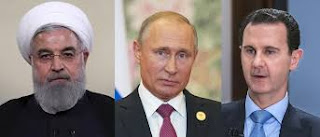(contents)
Chapter 7: The "Arab Spring" - A fleeting dream ( 21)
188 Syria: Enemy’s enemy is ally or another
enemy? (5/5)
Then foreign
countries focused on the destruction of Islamic State (IS) as the common goal.
IS stood in inferior situation. IS called for Muslims living in the US, Europe
and Russia to carry out the suicide bombing. Some IS combatants were requested
to go home and participate in terror activities. The former was called homegrown
terror and the latter was called hometown terror. To prevent homegrown or hometown
terrors, IS had to be destroyed completely as soon as possible. Only Syrian
government's army and the Kurdish force of the Syrian Democratic Force could be
effective against the IS. However, Kurdish troops are not in a position to get
support from Russia, Turkey and Iran.
Ultimately,
Western countries including the United States put aside the elimination of President
Al-Assad for the time being. They focused to the fight against IS. They
overlooked the military operations by Syria and Russia. Government and
anti-government forces bombed the Islamic State (IS) separately.
Saudi Arabia and
other Gulf countries once supported the Syrian Democratic Force of Sunni were
abandoned by the United States. Was the enemy’ enemy a friend or
another enemy? The chaos in Syria was deepened. The future of the Middle East was
invisible now.
(To be continued
----)
(From an ordinary citizen in the cloud)













